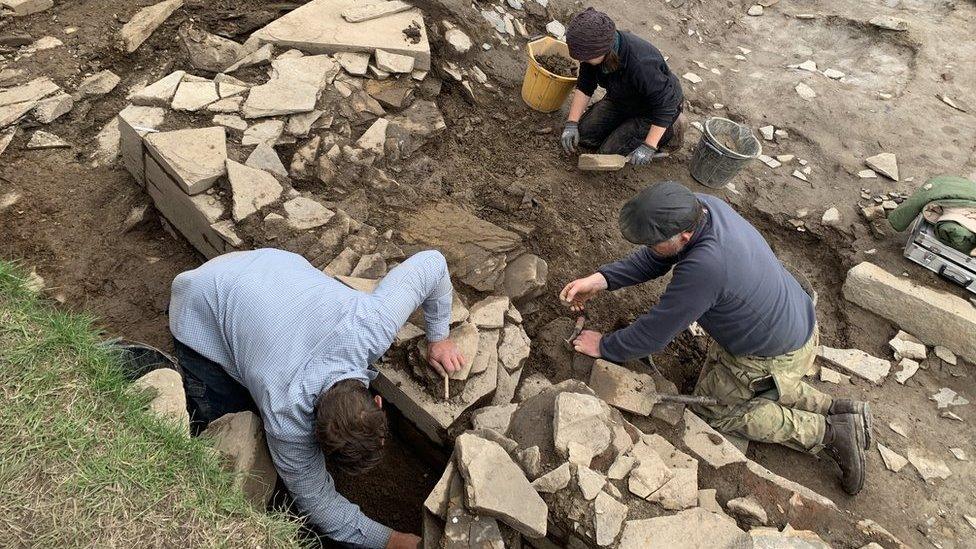Neolithic site to be covered over as Orkney dig ends

The Ness of Brodgar lies on a narrow isthmus between two lochs
- Published
It sounds like the cruellest of tasks. Spend twenty years digging in the dirt of a narrow, wind-battered strip of land between two lochs.
Then go and fill it all in again.
But this is exactly what's happening at the Ness of Brodgar, one of the most important Neolithic sites in the British Isles.
After two decades of patient, diligent, excavation and study, the people who have been uncovering the site's mysteries are having to cover it all up in the name of conservation.
The only way to save what they call "the Ness" is to hide it from view.

The Ness is south-east of the Neolithic stone circle, the Ring of Brodgar
The Ness lies just south-east of the Ring of Brodgar, the neolithic stone circle which can be seen as Orkney's version of Stonehenge.
Since 2004, excavations at the three hectare site have so far uncovered 40 structures, a cluster of buildings which suggests this was an important settlement in prehistoric Orkney.
They were built in waves between roughly 3500 and 2400BC.
The website of the Ness of Brodgar Trust, external says it's "without parallel in Atlantic Europe".
It's described as one of the most important archaeological excavations in the world, a find that changed what we understand about the culture and beliefs of Neolithic Orkney, one "shining a new light on the prehistory of northern Europe".
About 70 people work there throughout the summer digs. They're a mix of local and international volunteers, archaeology students and established professional researchers.
Archaeologist Nick Card, chair of the Trust and director of the Ness of Brodgar excavation, has been there since the beginning. He says the end of the dig is a very difficult time.
"It has been a very emotional year for many reasons, not least because the archaelogy has become part of my life and so many others' lives," he says.
"It will take us years to follow up and write up what we have found but it's emotional because the Ness team we built up every summer for the past 10 to15 years has become an extended family."
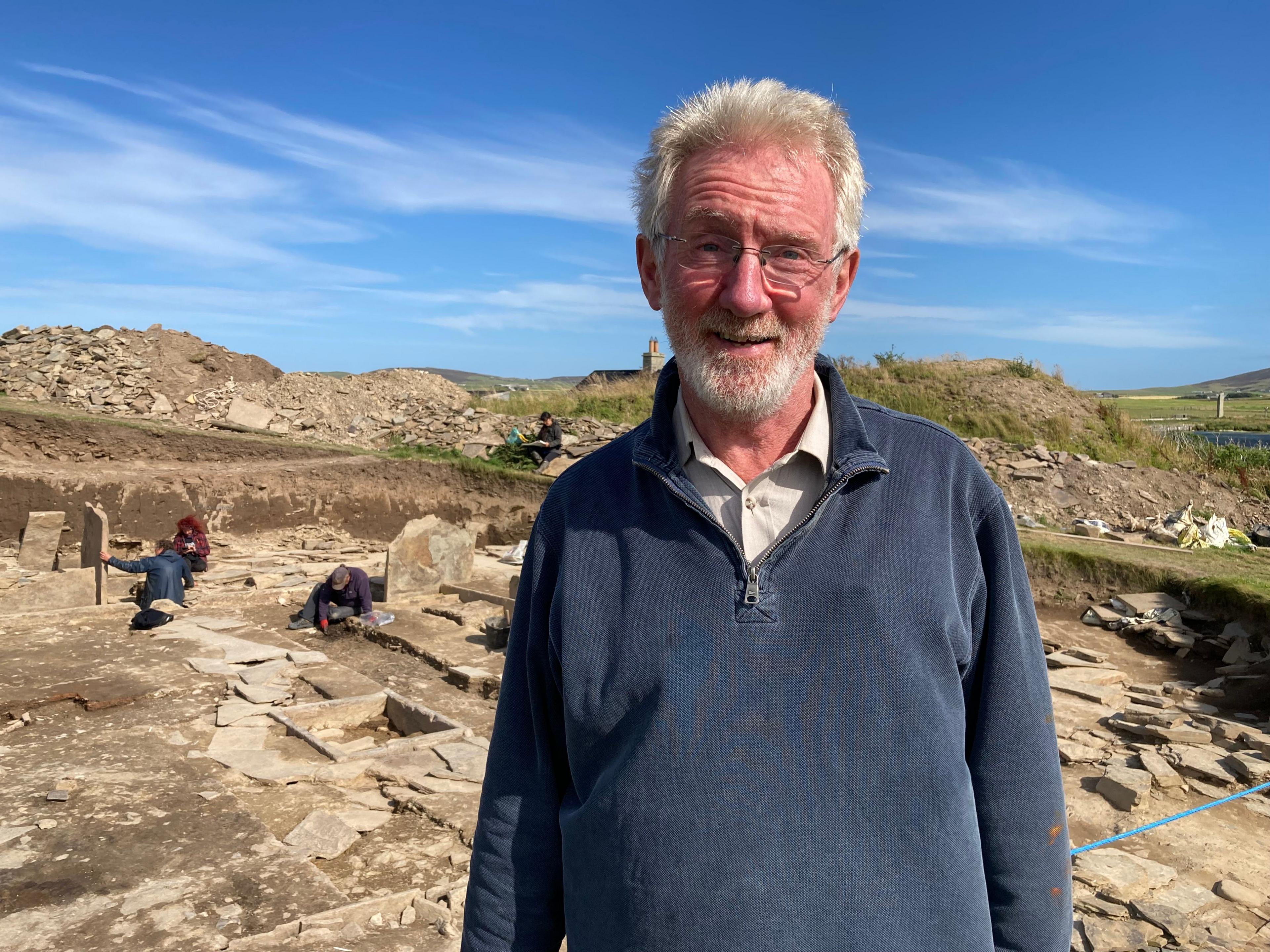
Nick Card has worked on the excavation since 2004
The problem for the team is the effect that exposure to the elements has on the stone structures at the Ness.
Unlike the hard beach stones used at the nearby Neolithic village of Skara Brae, the stones used in the Ness buildings were quarried. This leaves them prone to erosion and they would begin to disintegrate if left out in the open.
Nick says the obvious option of covering over the site with a permanent structure is out of the question.
"Structure costs would be astronomical. Even if we had the money, where would you put the foundations? The whole of the peninsula is one big archaeological site, so there is nowhere to put the foundations."
Instead, the team will now begin filling in the trenches and buildings from the "spoil heaps" - the piles of soil removed over the past 20 years - using mechanical aids in what Nick calls a "very considered way".
This work will be completed before the end of the year but that's not the end of the project.
They will continue researching and cataloguing everything they have excavated, writing up their findings into what Nick describes as a "coherent narrative of the site".
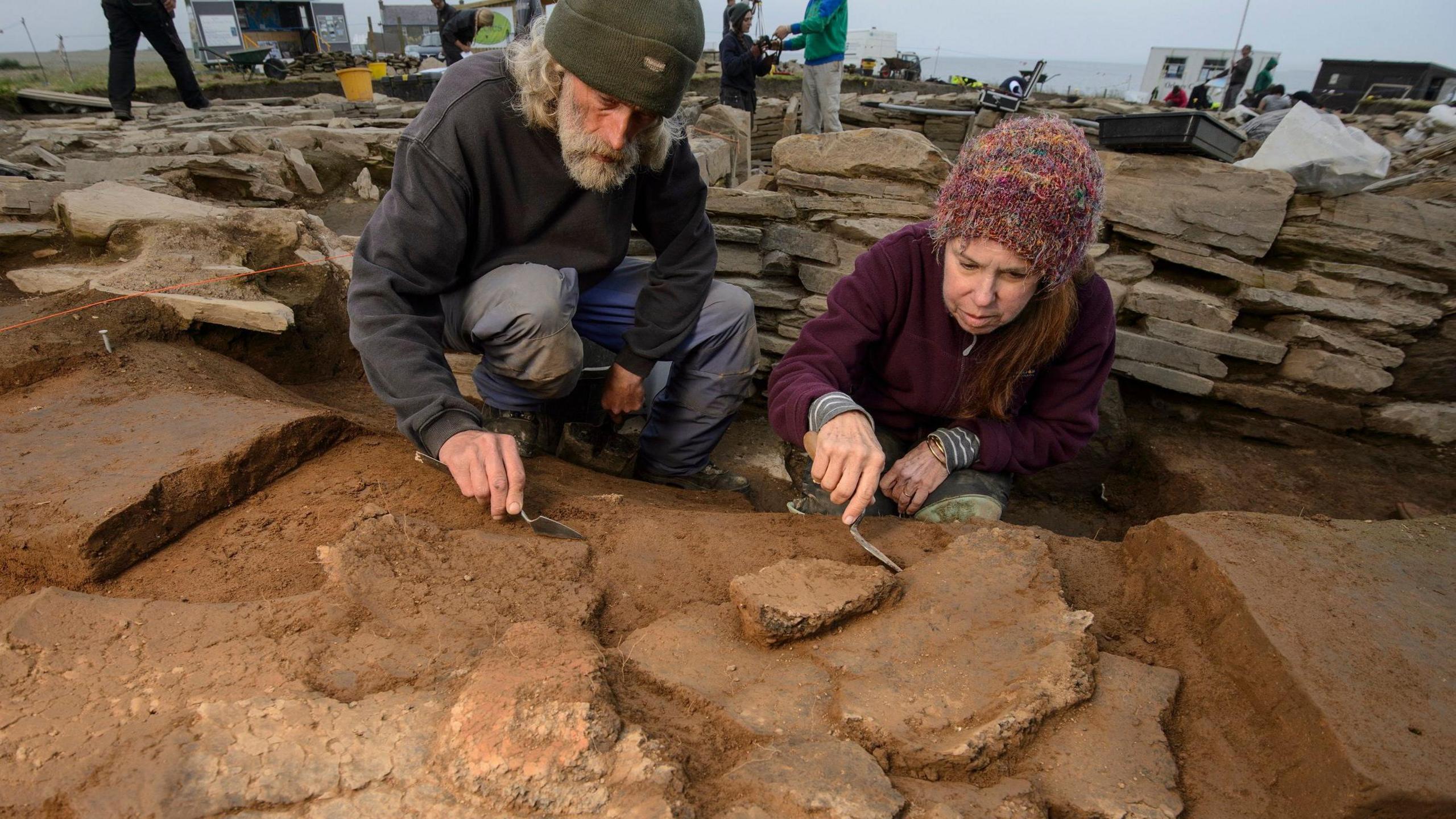
The stone uncovered in the excavation erodes if left to the elements
Of course, the Ness is not the only Neolithic site in Orkney.
A group of monuments including the burial mound of Maeshowe, the Standing Stones of Stenness, the Ring of Brodgar and - perhaps most famously - the village of Skara Brae, were named as a UNESCO World Heritage Site in 1999, about four years before the discovery of the Ness.
These will remain accessible for the public to enjoy after the Ness has been covered up. But the site has been an important part of that heritage and Nick describes it with awe.
"It's a huge archaeological iceberg. Near the top of the site there may be five metres of archaeology, structures built on top of others," he says.
"And it was built over a time span of 1,200 years. That's the whole of the Neolithic time period in Britain.
"Finding it has changed our perception of the area. It has improved our understanding of the way people used the land at that time.
"Now we must never underestimate our Neolithic ancestors and what they were capable of."
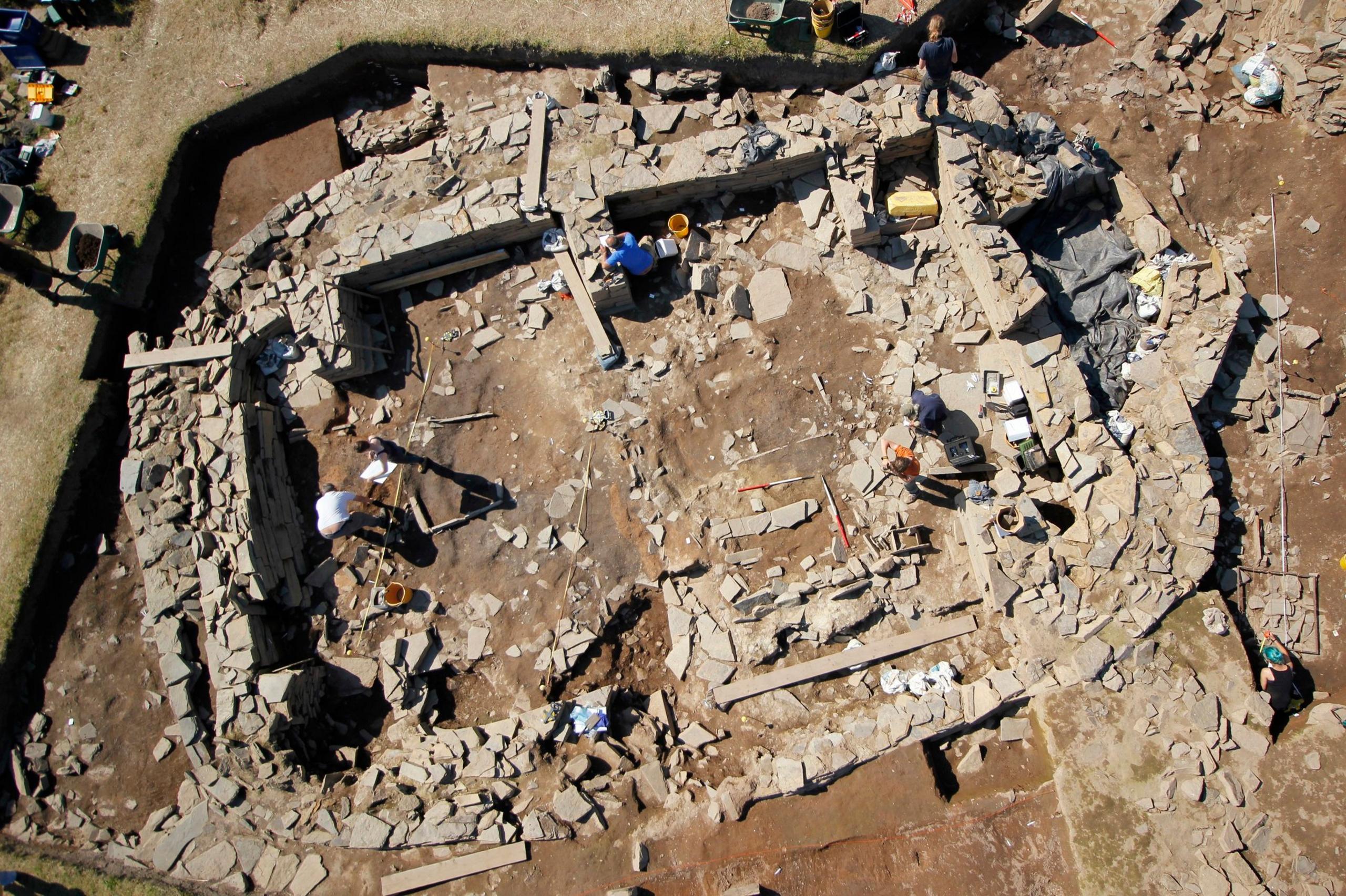
"Structure 12" on the site was built about 3100BC
The Ness has also become a popular tourist destination, with daily talks and regular open days during the summer digs. This year alone, 20,000 people have visited.
Martin Fleet, chairman of tourism body Destination Orkney, says it has been "at the heart" of their summer season since digging began.
"Thousands of people, including local folk, have been able to watch Orcadian history uncovered in real time, and the team at the Ness have provided an absolutely first-class experience over the years," he says.
“We’re all sad that the dig is coming to an end. It has been a huge benefit to tourism locally and has encouraged people from all over the world to visit our islands.
"We still have many other incredible archaeological sites and annual digs to see, so visitors will always have the chance to take a trip back in time during a holiday in Orkney.”
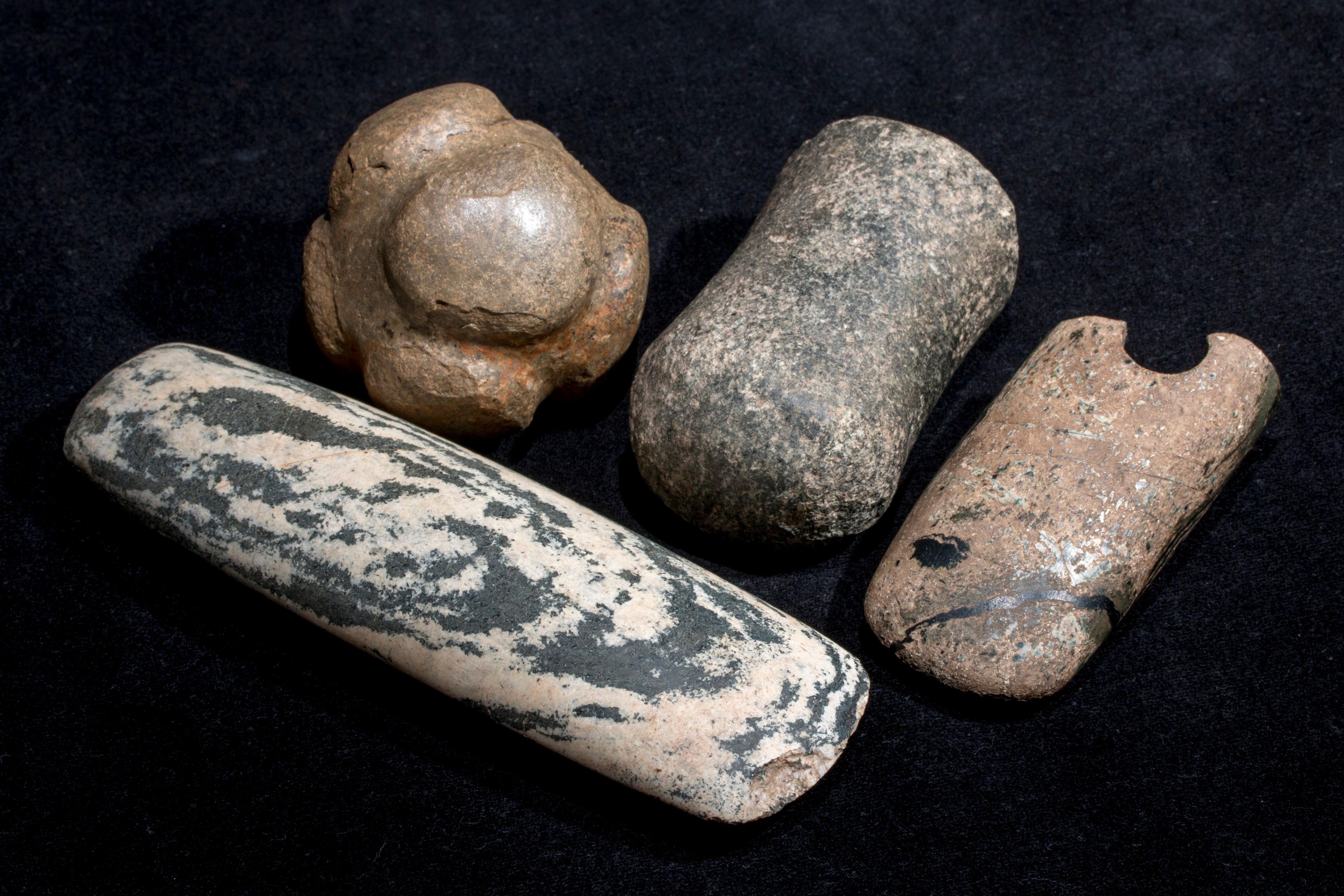
Polished artifacts from the Ness include a stone ball, axehead and maceheads
As the Ness team prepares to end the excavations, Nick talks about being touched by members of the public thanking them for the work they have done.
It's a bitter-sweet time for him and his colleagues but archaeologists think about time differently to the rest of us.
The Ness of Brodgar site has been there for thousands of years. It's hoped the work done over the coming months will protect it for thousands more.
And while Nick is sad to be covering up their work, he's sure it's the right thing to do.
"We must leave stuff for future archaeologists, who will have better techniques than we do today," he says.
"Archaeologists' prime concern is protecting the site for future generations. And that's my utmost concern.
"Hopefully, our legacy will always be an important part of Orkney."
Related topics
- Published26 June 2024

- Published19 August 2022
